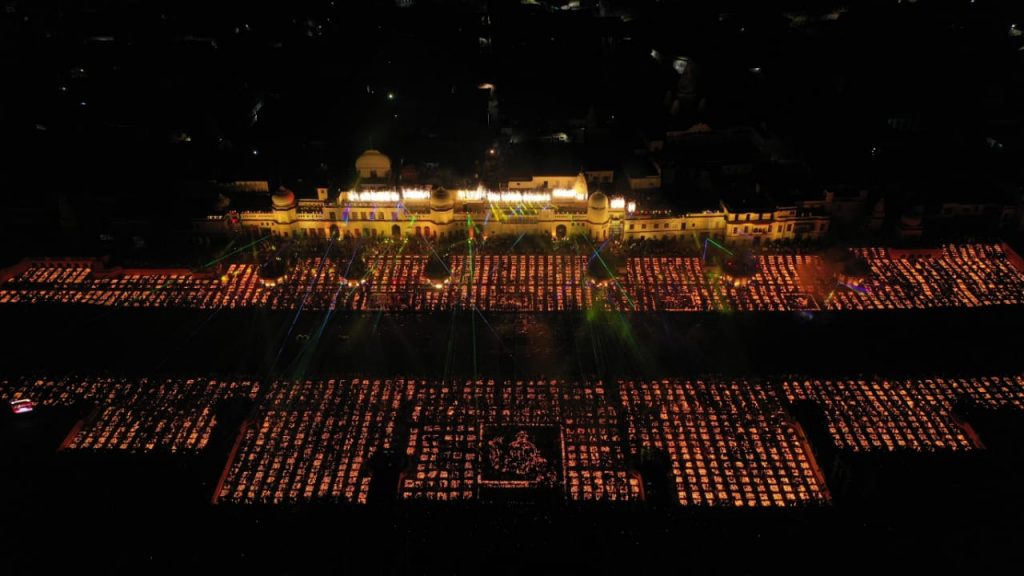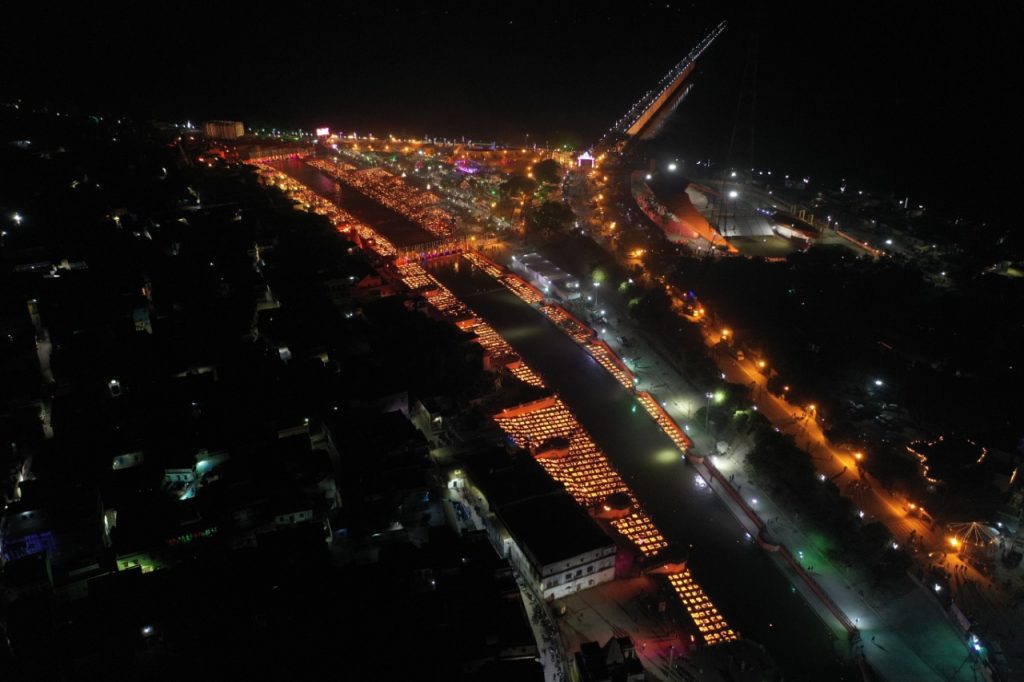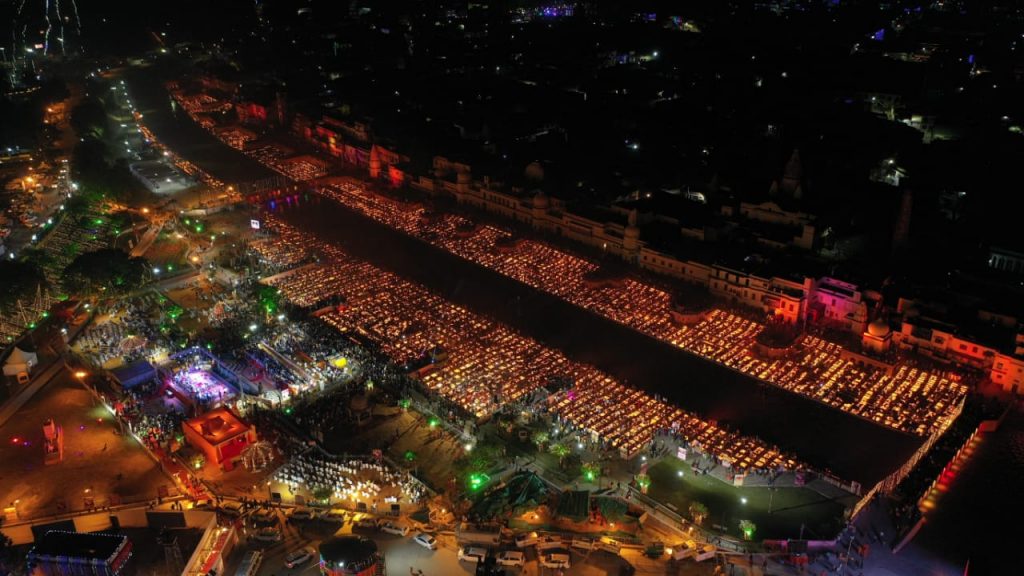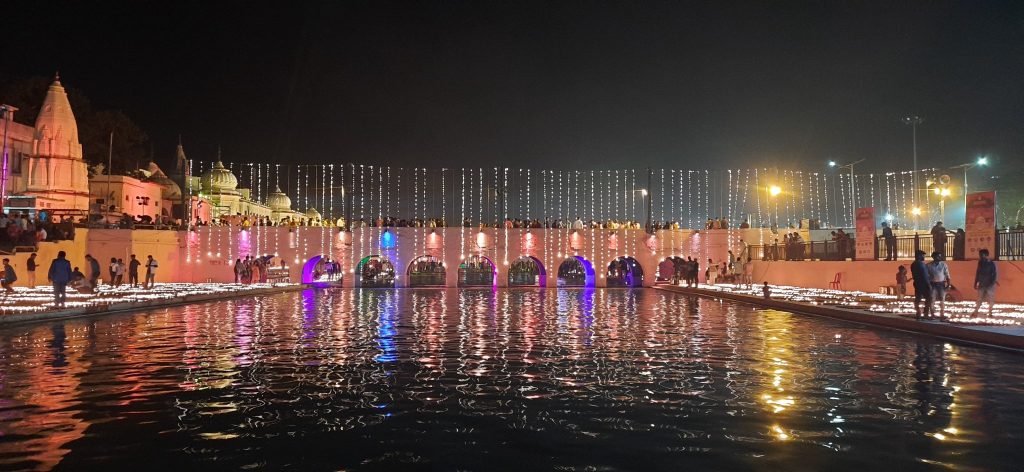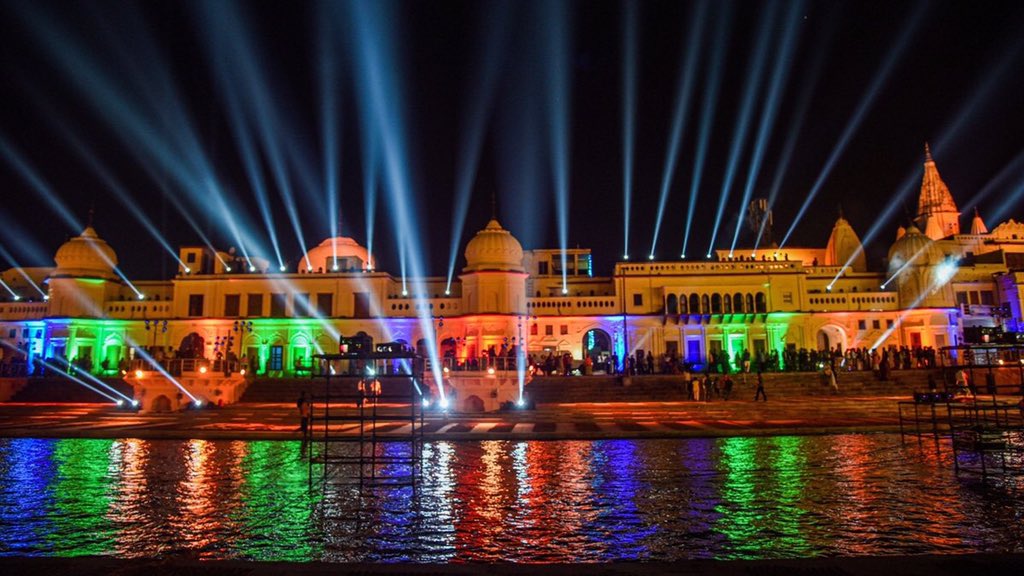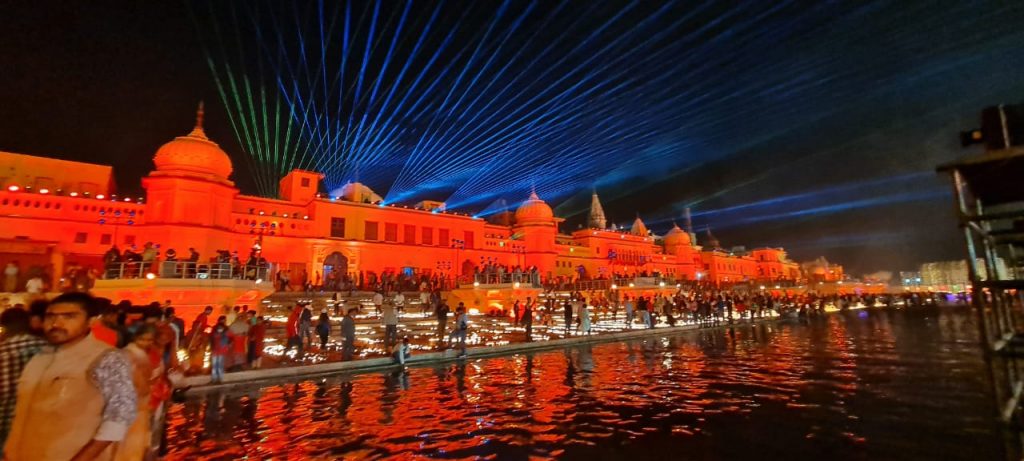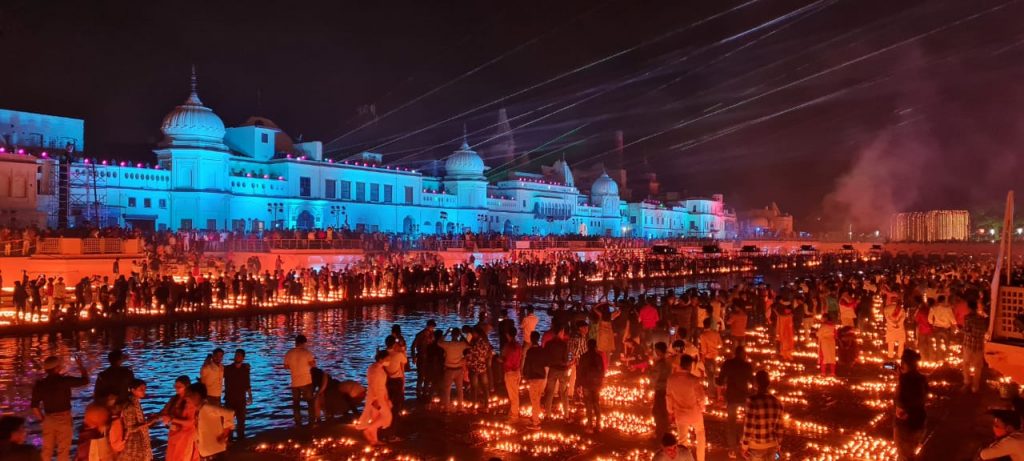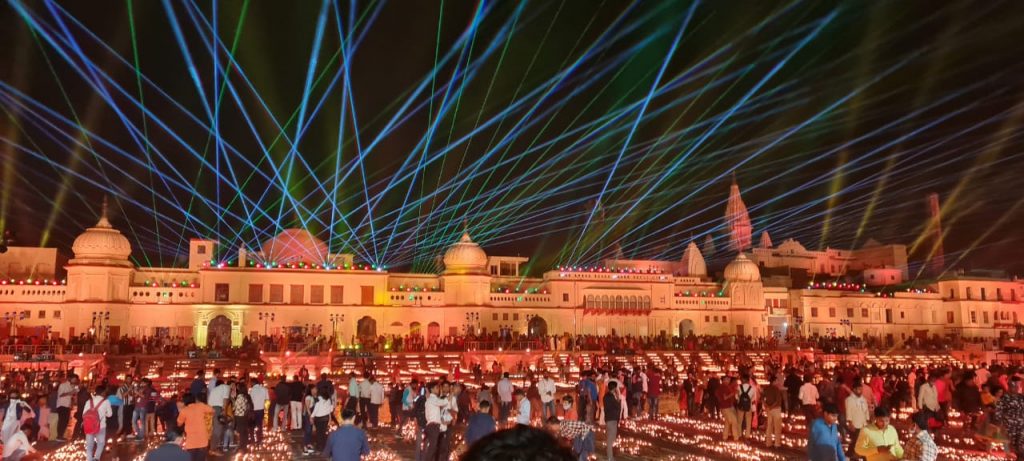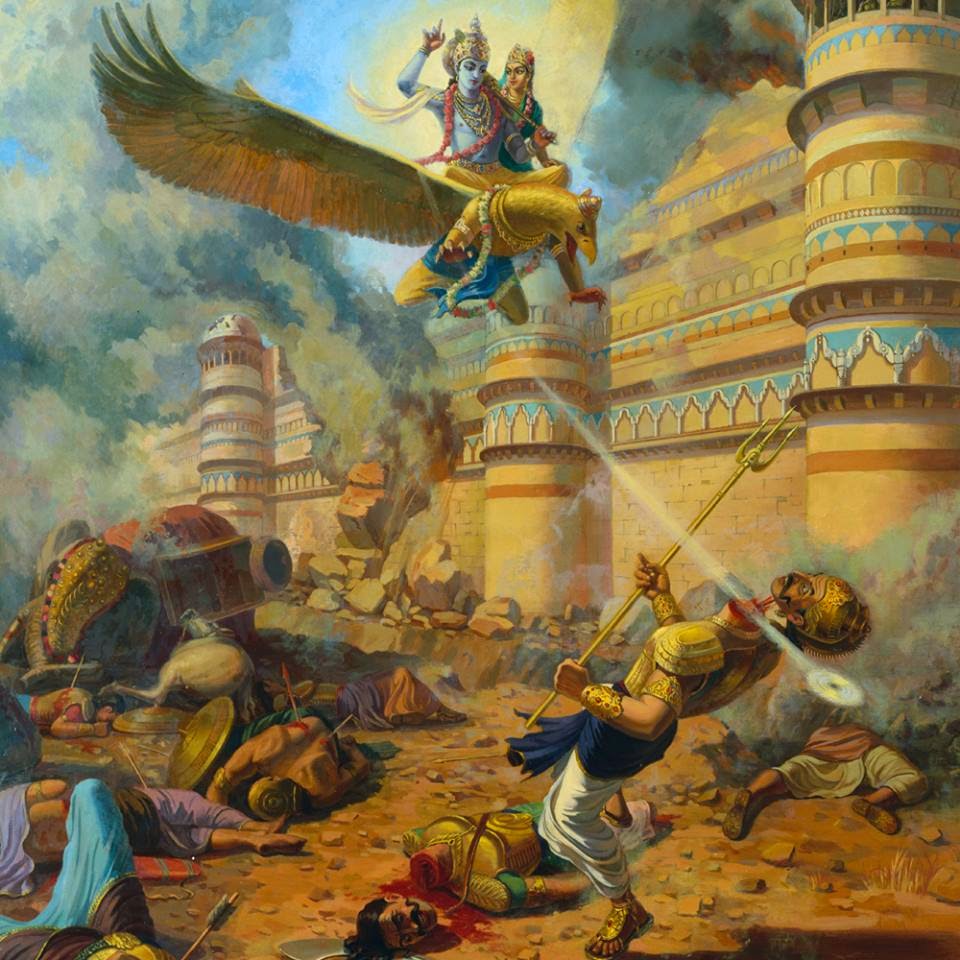
Deepawali is known as the Festival of lights. Arguably the most well-known festival from India, Deepawali (or Diwali) is celebrated around the world, even in the United Arab Emirates, where dazzling fireworks and light shows mark the occasion.
A lot of Indian festive buying culminates in Diwali. People buy everything from cars to jewellery to mobile phones, discounts abound in all online and offline stores and the new year is brought in with fireworks, diyas, row lights and a lot of pomp and splendor.
As with Dhanteras, Diwali is confusing to some. Is this a materialistic festival, or a spiritual occasion?
Let’s start with the ‘convenience’ bit. Diyas with oil and cotton wicks have given way to candles, and in some instances, battery-operated electronic LEDs, which (in my father’s words) do not extinguish in the wind. Chinese lights illuminate most buildings, and sweet shops make a killing, with sweetmeats sold in an assortment of rich-looking packages. These sweets find their way to households who mostly circulate them among their friends and relatives – pre-packed terracotta diyas, dry-fruits et al. Even rangolis now come in cardboard variations.
So much for the spirituality:)
You can conduct a puja, any puja, with an elaborate set of sāmagri (items), or just one flower. What matters is the feeling within. Likewise, Deepawali can be celebrated with an array of dazzling lights, or just one diya, that lights the Jnana Jyothi (the inner wisdom)…the many diyas in your mind are lit by this one Jyothi, thus creating the wali (array) of deepas…resulting in Deepawali.
What do you need to light a diya? Four main ingredients – an earthen diya, oil, a cotton wick and a match. Likewise, you need four ingredients to light your inner diya – Vairagya (detachment) as the earthen diya, Bhakti (devotion) as the oil, Ekāgrata (single-mindedness) as the cotton wick, and Jnana (knowledge) to provide the spark.
One of the stories associated with Deepawali is the slaying of Narakāsura, by Krishna and Satyabhama. It is said that Krishna then “married” the 16,000 wives of Narakāsura. Seems pretty fantastic a story, yes?
Narakāsura ruled at Pragjyotishapuram. The word Pragjyotishapuram comprises Prag (before), jyoti (light), sha (forgot) and Puram. The city where the light of Jnana was absent, hence Pragjyotishapuram. One who travels towards ignorance is Naraka…and so Krishna got rid of Narakāsura, and brought the light of Jnana to the people of the city.
But why marry 16,000 women?
Well, they weren’t women in the first place.
In the human body, there are what are called “Chakras”, or seven spiritual nādis or centers. Of these, the two most important are: the Anāhata (the Heart) and Sahasrāra (the thousand-petal chakra). The Anāhata is also known as the Lotus of the Heart, and has eight petals. These eight petals symbolise the eight worlds, the eight directions, the eight guardians of the world…Because Krishna was the Lord of these eight petals, he was described as the husband of these eight queens. The ‘master’ is called ‘Pati’ and those under him are described as wives. This is a symbolic relationship in the worldly sense.
Similarly, the Sahasrāra is called the thousand-petalled Lotus (if you haven’t seen it already at the yoga studio next door). Each petal has sixteen phases or kalas, representing the sixteen phases of the moon. And so Krishna, being the Lord of the sahasrāra, is the pati of the sixteen thousand kalas contained in it – hence misinterpreted as one who has 16,000 wives.
And so, like most Indian festivals that you have come to know, Deepawali too speaks of finding that inner light, of moving from ignorance to knowledge, and onto the path of righteousness. As Swami Sivananda put it…
He who Himself sees all but whom no one beholds, who illumines the intellect, the sun, the moon and the stars and the whole universe but whom they cannot illumine, He indeed is Brahman, He is the inner Self. Celebrate the real Deepavali by living in Brahman, and enjoy the eternal bliss of the soul.
And moving a bit further back, as Sri Krishna put it…
ये हि संस्पर्शजा भोगा दु:खयोनय एव ते |
आद्यन्तवन्त: कौन्तेय न तेषु रमते बुध: || 22||
ye hi sansparśha-jā bhogā duḥkha-yonaya eva te
ādyantavantaḥ kaunteya na teṣhu ramate budhaḥ
The pleasures that arise from contact with the sense objects, though appearing as enjoyable to worldly-minded people, are actually a source of misery. O son of Kunti, such pleasures have a beginning and an end, and so the wise do not delight in them.
शक्नोतीहैव य: सोढुं प्राक्शरीरविमोक्षणात् |
कामक्रोधोद्भवं वेगं स युक्त: स सुखी नर: || 23||
śhaknotīhaiva yaḥ soḍhuṁ prāk śharīra-vimokṣhaṇāt
kāma-krodhodbhavaṁ vegaṁ sa yuktaḥ sa sukhī naraḥ
Those persons are yogis, who before giving up the body are able to check the forces of desire and anger; and they alone are happy.
योऽन्त:सुखोऽन्तरारामस्तथान्तज्र्योतिरेव य: ।
स योगी ब्रह्मनिर्वाणं ब्रह्मभूतोऽधिगच्छति ।। 24।।
yo ‘ntaḥ-sukho ‘ntar-ārāmas tathāntar-jyotir eva yaḥ
sa yogī brahma-nirvāṇaṁ brahma-bhūto ‘dhigachchhati
Those who are happy within themselves, enjoying the delight of God within, and are illumined by the inner light, such yogis are united with the Lord and are liberated from material existence.
आप सब को दीपावली की शुभकामनाएँ…Wish you a very happy Deepawali!

